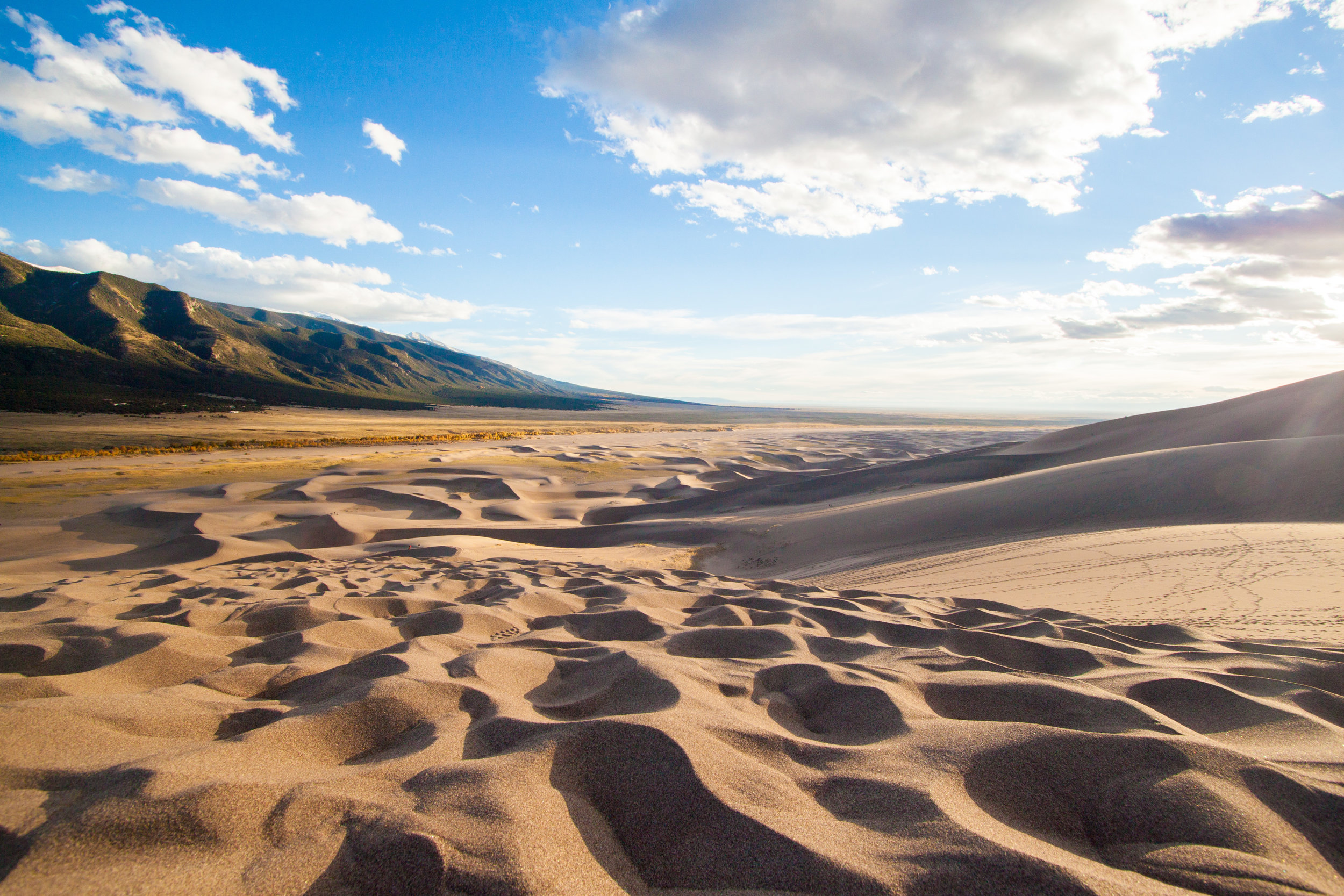Great Sand Dunes National Park, Colorado
Where would you guess the tallest sand dunes in North America are located? Maybe one of the major southwestern deserts or somewhere in Mexico. But sometimes geology can challenge your preconceived notions. I recently visited the 750-foot dunes in one of the newest national parks, Great Sand Dunes National Park and Preserve in Colorado.
Just a four-hour drive from where I live, Great Sand Dunes (GSD) is a visual puzzle. It looks as if someone has scooped up part of the Sahara and dumped it at the foot of the Rocky Mountains. Many people are not even aware of its existence. The dunes lie in the San Luis valley sandwiched between two mountain ranges. Having moved from the east coast, visiting southern Colorado is also an exercise in scale. The whole of my home state of Connecticut could fit inside the San Luis Valley.
With the Sangre de Cristo range on one side and the San Juan range on the other, over time sediment landed or washed down into the valley. Winds blowing from each direction formed the sediment into sand dunes. This also challenged my expectations: thus far, the balance of environmental factors has kept the dunes the same. They are neither growing nor shrinking!
One half of the park is the preserve, where you can hike the forested Sangre de Cristos. It feels a lot more like other National Parks in the region or hiking anywhere in the Rockies. But if you turn left instead of right as you enter the park, you’ll find yourself in the other half: the dune field.
Scampering up and sledding down ridges brought youthful exuberance. You can rent sleds and boards just outside the entrance. However, here lies another riddle of GSD: sand hiking is so much more tiring than the steepest hiking I’ve ever done on solid ground. I couldn’t help but feel discouraged as I noticed with every one step forward I sunk half a step back. Luckily, my reward was a beautiful, open view of the dunes at sunset with starkly shadowed faces. Also, the descent was easy: your choice to run, tumble, scoot, or sled.
There are some mammals, small lizards, and birds that live in or migrate through the Park and Preserve. But as with most wildlife sightings, it is completely dependent on time of year and luck.
Just outside of the park is another bit of San Luis mystery. If you drive over to Zapata Falls you’ll find 1.5 miles of extremely bumpy, unpaved incline. If you choose to venture up this gravel hill, you will begin to regret it about half an hour in, for the sake of your car’s axles. But if you make it to the top, there’s a great vista of the dunes. Continue on foot down a short half mile walk and you’ll end up at a tranquil creek. However, things are once again not as they seem. Step right into the creek and walk up it a few hundred feet, stepping carefully on slippery rocks and keeping your hands free. Even in waterproof boots, this is a lot easier outside of the summer months, when the creek is lower. Continue fording into a dark crevasse and you’ll discover a loud, rushing, hidden 25-foot waterfall.
During my time in the wondrous Great Sand Dunes and San Luis Valley, I was reminded that the clearest insights and sweetest rewards follow a bit of confusion and challenge. It also made me think about seeking out hidden gems when traveling, not just the obvious attractions or most heavily-trafficked areas.



